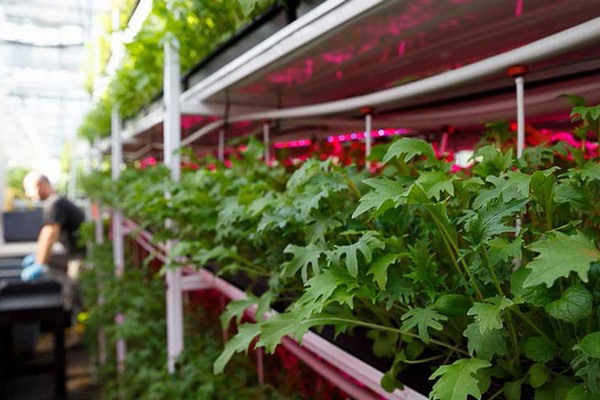GE Current, a Daintree company, today extended its global horticulture lighting research initiative, launching a new partnership with Wageningen University & Research (WUR) in the Netherlands. The new study, led by WUR’s Prof. Dr. Leo Marcelis, will focus on determining the value and uses of interlighting for greenhouse vine crops like tomatoes, using both Current’s range of Lucalox HPS and Arize LED products. The research aims to provide growers with better guidance on the position, type and intensity of interlighting, in combination with LED top lighting, to maximize yield volume and quality.

WUR is the latest pre-eminent agricultural science institute to partner with Current to better understand the impact of supplemental lighting on plant growth. Dr. Hans Spalholz, Senior Plant Scientist at Current, commented: “The use of LED lighting in horticulture is still a relatively novel concept so we want to remove some of the guesswork and mysticism that currently surrounds it through rigorous, scientific investigation. Wageningen University & Research is extremely strong when it comes to controlled environment agriculture research and is even ranked as the world’s university for agricultural sciences. Needless to say, we are very excited to work with such a strong academic team to answer the important and pressing questions for growers. With this, and our other academic partnerships, we aim to drive the horticultural lighting industry forward, with credible insight, backed by science and applied data.”
The study will capture a lot of data through the coming months and the results will be published in a peer-reviewed journal. It is the latest research project for Current, which is also working with NC State University, Ohio State University and the Stockbridge Technology Centre in the UK to investigate the impact of light on different stages of plant growth across a wide variety of medicinal, ornamental and edible crops.
Prof. Dr. Leo Marcelis, Head of Horticulture and Product Physiology group at Wageningen University & Research, commented: “Despite higher energy costs and environmental concerns related to HPS lighting, growers are more likely to consider the move from HPS to low-energy LEDs once they are certain it will be beneficial to crop productivity. Our work with Current aims to compare the effects of LED and HPS lighting on yield and quality of tomato, as well as comparing different ratios of all-LED top lighting versus intra-canopy lighting, providing more definitive guidance to growers on how best to achieve their production goals.”
With a growing library of independent, peer-reviewed research, Current roots its product development and commercial guidance in hard data and scientific fact. The findings of its collaboration with WUR will help refine the design and deployment of the company’s forthcoming interlighting portfolio and will offer more detailed insight into the most effective light distribution and ratio between top lighting and interlighting fixtures.
Malcolm Yare, Horticulture Business Development Manager at Current, added: ”Although interlighting is widely used in the industry, very little reliable research is available to help growers harness it for maximum effect. We’re looking to replace the trial-and-error phases with clearer guidance for our customers and partners, giving them confidence that not only do they have the best lighting on the market, but also that their installation is optimized to achieve its full potential.”


Wageningen University & Research
www.wur.nl
